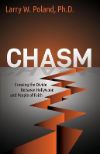- Author(s): Kenneth Fredheim
- When: 2011-09
- Where: Source
According to Campbell (1993:11), the prime function of mythology is to “supply the symbols that carry the human spirit forward, in counteraction to those other constant human fantasies that tend to tie it back”. Star Wars was released at a time when technological development had literally skyrocketed. The previous two decades had seen technological advancements make everyday life easier for millions of Americans. Further, Man had begun exploring the final frontier, space. In 1969 the first manned moon landing took place, thus pushing the threshold to the unknown back a little further. At the same time, technological advances made during the Second World War had led to the development and proliferation of weapons of mass destruction. Mumford (1967:3) argued that the technological advances of the past century had altered the human personality. As such there was a need for new myths to aid in the processing of human experience. In 1977, Star Wars addressed the syzygy of positive and negative possibilities inherent in technology and provided hope for the future. As the world grows increasingly secular, as technological development and scientific discovery continue at an exponential rate and as the world becomes both more fragmented and unified at the same time, this thesis posits that the themes of Star Wars are as relevant today as they were over thirty years ago. As such, Star Wars truly is a modern myth.








